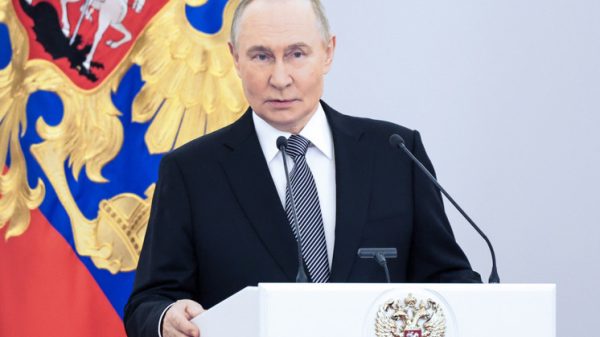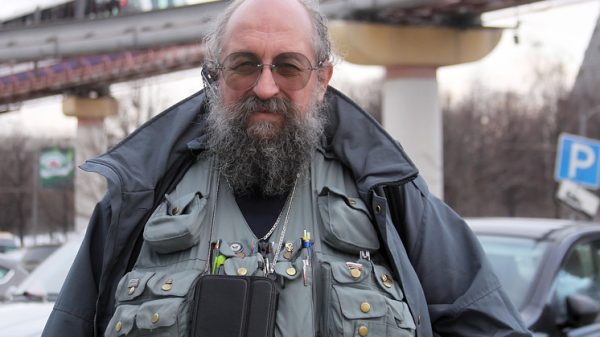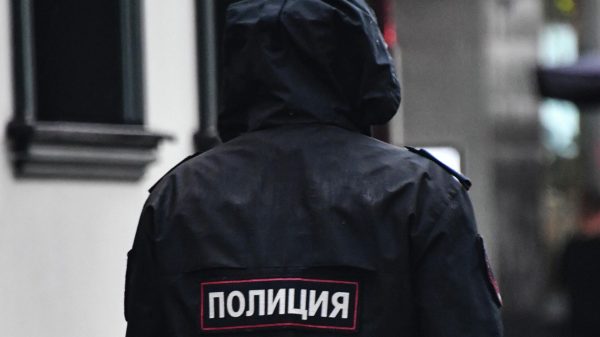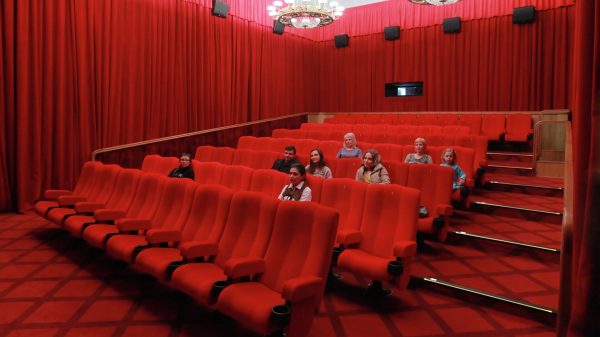
Sometimes, Stuart Ritchie feels like he’s being pursued by an army of smiley faces. The lecturer at the Institute of Psychiatry, Psychology and Neuroscience at King’s College London, is not delusional: instead, and somewhat to his surprise, he is on the frontline of a coronavirus information war.
The emojis often decorate the Twitter profiles of the self-proclaimed “lockdown sceptics”, a subset of social media users who remain unconvinced that coronavirus restrictions are necessary, even as the number of deaths in the UK approaches 100,000.
Often they are indignant at the efforts of Ritchie and others to refute the claims of a small but thoroughly amplified cadre of columnists, academics and enthusiastic amateurs, ranging from the free speech advocate Toby Young to the engineer and diet guru Ivor Cummins, who provide dubious but densely argued justifications for their stance. At some point they settled on the smiley as their membership badge. If it is meant to be friendly, it doesn’t necessarily come across that way.
“When you tweet anything to dispute these claims, they come after you endlessly,” said Ritchie. “And with the emoji, it’s almost cult-like. They make the same discredited arguments over and over again. It’s like a robot zombie army.” In the course of a telephone interview, he got four disapproving tweets from the same user, whose profile picture was a great big yellow grin.

In recent weeks, though, Ritchie – also the author of Science Fictions, a well-reviewed book about shortcomings in scientific research – has found himself participating in a fightback. He is one of a group of volunteers, ranging from a politician to an anonymous doctor, behind a new website, Anti-Virus: The Covid-19 FAQ. Pitched as a source of reliable information, the site is devoted to demolishing the claims of the sceptics and, when they pivot to new predictions, holding them to account.
“Their story always shifts,” said Neil O’Brien, the MP and Conservative party vice-chair, who is one of the progenitors of the group and perhaps the most prominent. “Seeing that in a forensic way is useful. We’re able to track where they’ve been wrong again and again but doubled down, or simply moved on to the next subject.”
The site, which has been live since Wednesday, may signal the start of a new phase in the fight to defend lockdowns against prominent critics, whose visibility vastly outstrips the proportion of expert views they represent. While public support for lockdowns has remained solid, with most criticism reserved for the government’s execution of the policy rather than for the principle, those behind Anti-Virus view the prospect of widespread vaccination – coupled with the staggering death toll being published each day – as lending a new urgency to their cause.
Quick guide Debunking the coronavirus sceptics
Show
Hide
A summary of rebuttals offered by the Anti-Virus website to selected claims made by sceptics – detailed in full on the site.
Claim: The infection fatality rate (IFR) is very low – 99.5% of people who get it survive
Response: The 0.5% figure has been challenged by significantly higher recent estimates, and it understates how lethal Covid is to older people who get it. The IFR is being kept low by lockdown – and if the virus were allowed to spread, the death rate would be higher because there wouldn’t be enough space in hospitals to treat those who need it.
Claim: 91% of Covid ‘cases’ are false positives. This is a ‘casedemic’
Response: This theory is based on a statistical misunderstanding, and since during the summer (when Covid cases were low) only 0.3% of tests were showing positive results, it cannot be that a much greater proportion of positive tests are now “false”. In any case, the huge rises in hospitalisations and deaths disprove the idea that people aren’t really getting sick.
Claim: There are no excess deaths
Response: The ONS recently estimated 14% more deaths in the previous year than the baseline from the previous five years – and that happened even though in the latter part of the year, deaths from causes other than coronavirus actually fell.
Claim: Lockdowns cause more deaths than they prevent
Response: This contradicts all the evidence that virtually all of the excess deaths we have seen have been attributable to Covid. Suicide rates have not risen, and violence may have fallen. Pressure on the NHS is being increased by coronavirus, not lockdown, and would only grow if restrictions were lifted.
Claim: Danish study shows masks don’t stop the spread
Response: The study was only testing protection for the wearer, not others in the vicinity. Problems with its design were pointed out before it was conducted, and there is lots of evidence from around the world that mask-wearing is associated with a lower rate of increase in the spread of the virus.
Was this helpful?
Thank you for your feedback.
“I think you can see that the government is indirectly influenced by [lockdown sceptics],” said Sam Bowman, senior fellow at the right-of-centre thinktank the Adam Smith Institute and another of those behind the site. He pointed to Boris Johnson’s reluctance to impose Christmas restrictions until the last minute, in part because of backbench Tory opposition. “These arguments begin on the fringes and get into newspapers and then get regurgitated by backbenchers, but the people behind them are not accountable.”
The idea for Anti-Virus was born when Bowman, a friend of Ritchie’s, found himself exchanging messages about the problem with O’Brien (who notes he does not share that view of influence on policy). Both were participants in the same fight, and although they felt they were having some success, their opponents were difficult to pin down.
With most of the group on the right – two thirds, Bowman estimates — there is a sense of reputation management, too. “We were both, independently, really aggravated,” said Bowman. “Maybe it’s the narcissism of small differences – seeing people who are also theoretically on the right making such dangerous claims, it’s exasperating.”
Bowman and O’Brien had found large audiences on Twitter by posting threads of messages highlighting some of the more outlandish claims made by the likes of Young, who has deleted his old tweets, the TalkRadio presenter Julia Hartley-Brewer, and the Daily Telegraph columnist Allison Pearson, including confident assertions last year that the virus had vanished. Bowman’s examined Pearson’s record, finding declarations such as that she would not wear a mask because she found them demeaning, and got 126,000 likes. (“It’s sort of sad that the most successful thing I’ll ever do in my life is owning a Telegraph columnist,” he said.)
Graphic
But while these public skirmishes helped blow off steam, the claims of the sceptics, who are fond of opaque references to the infection fatality rate (IFR), serological surveys, and polymerase chain reaction tests, were being reproduced far from that context and, critics say, persistently misrepresent scientific reality.
“It’s really easy to lose track on social media,” Bowman said. “And most people are not on Twitter, but this stuff percolates on to Facebook, WhatsApp chats, everywhere.”
The ambition, Ritchie says, is not “for Toby Young to tweet, actually I was wrong. They’re in an ideological system where they’re not interested in a real debate. It’s for the person who hears someone say something bizarre, and thinks, I don’t know how to reply to that.”
Among other things, the Anti-Virus site explains that the claim there are no excess deaths relies on a vast misreading of the ONS data; it sets out why claims of “false positives” – the so-called casedemic theory, which has gained some traction in sceptic circles in recent months – don’t make sense when so many people are going to hospital and dying. Also, it points some fingers.
As well as items on Young, Pearson and Hartley-Brewer, the site has pages devoted to other prominent sceptics, including the Oxford university academics Sunetra Gupta and Carl Heneghan, and the former Pfizer vice-president Dr Michael Yeadon. It is not their contrarianism that earns them a spot, the authors argue; it’s their track record.

As an unsigned Q+A on the site puts it: “A few people, for whatever reason, have consistently made false claims and bad predictions throughout the Covid pandemic, and have refused to admit when they’ve got it wrong … We try to use their own words to show that many of them are not reliable people to listen to.”
Young, Hartley-Brewer, Heneghan, Gupta and Yeadon did not respond to requests for comment.
With 30,000 views in its first two days, the resource, put together by the group through a collaborative editing process with a website-building tool called Notion, and discussed as they went on a Twitter DM thread, is gathering steam. It has been praised as “excellent” by Stian Westlake, the CEO of the Royal Statistical Society, while O’Brien says some of his fellow MPs have started sending its explanations of supposedly contentious issues to concerned constituents.
As the site gains prominence, it is unlikely to be universally viewed as constructive, with some saying it stifles free speech. On Thursday, the Times columnist Iain Martin accused O’Brien and Bowman of attempting a “Munich-style” reckoning with the “guilty men”. When O’Brien’s threads taking them on went viral, Young suggested he was being smeared, while Hartley-Brewer called him a “Witch-Finder” and “Hancock’s house-elf” who should stick to his day job.
“This idea it’s none of an MP’s business – trying to get to the facts of a deadly pandemic is absolutely an MP’s business,” O’Brien said. “You’ve got to look at people’s testable propositions and see how they’ve panned out. That’s how science works.”

With claims of massive failings in the scientific consensus looking increasingly outlandish in the face of a grimly rising death count, there are signs that the sceptics are recalculating. Besides retweets, Pearson has remained largely quiet on social media since a row after she threatened to sue a critic at the beginning of January; Young admitted on Newsnight he had been wrong to write that “the virus has all but disappeared” in June, and was the subject of an IPSO ruling finding that a Telegraph column was “significantly misleading”. Heneghan and Gupta, whose names appeared in the Telegraph and Mail 137 times last year before Johnson announced a Christmas lockdown on 19 December, have been mentioned just four times since then.
On Wednesday, meanwhile, O’Brien highlighted another prominent sceptic, Dr Clare Craig, who said that “we are now in the midst of a false positive pseudo-epidemic”, and that there have been “no excess deaths”. Craig accused O’Brien of making false claims that she was spreading disinformation, saying he had no evidence, and demanded an apology. She, too, had deleted her old tweets – and she has removed the smiley from her profile picture.
“I’ve really picked up the sense among the extreme sceptics that they feel the walls are closing in,” said Bowman. “And I think they’re right.”



















































Свежие комментарии